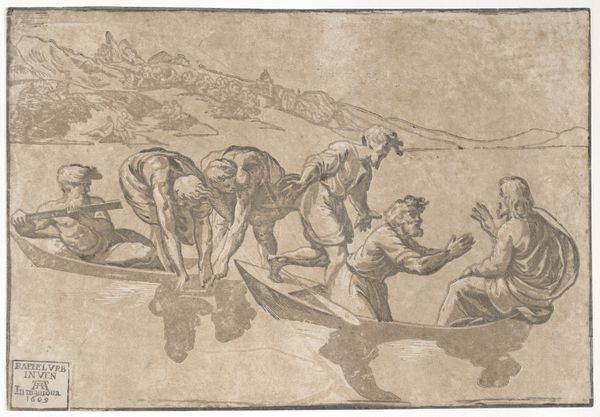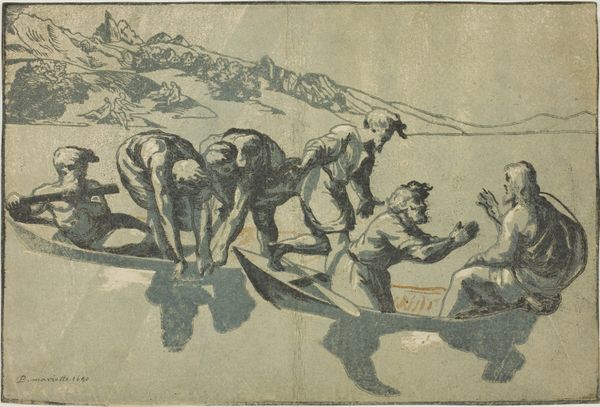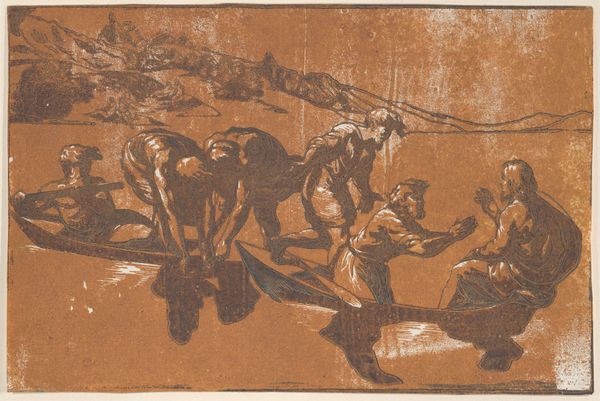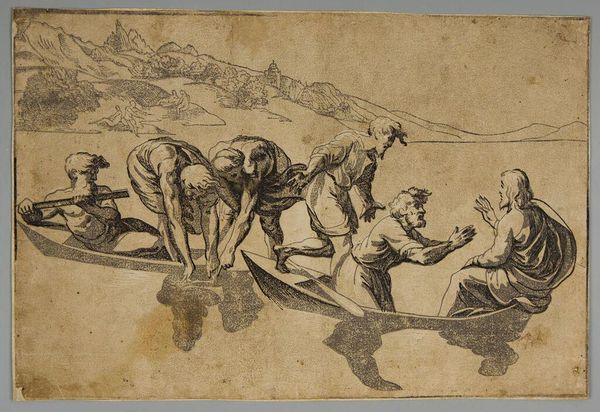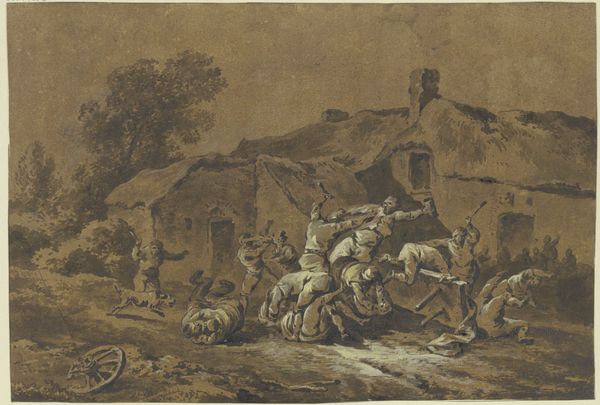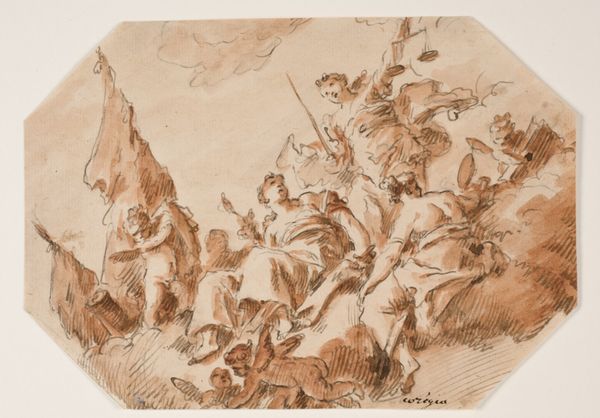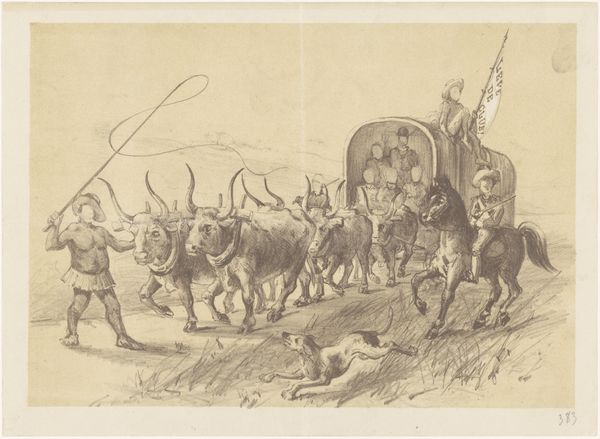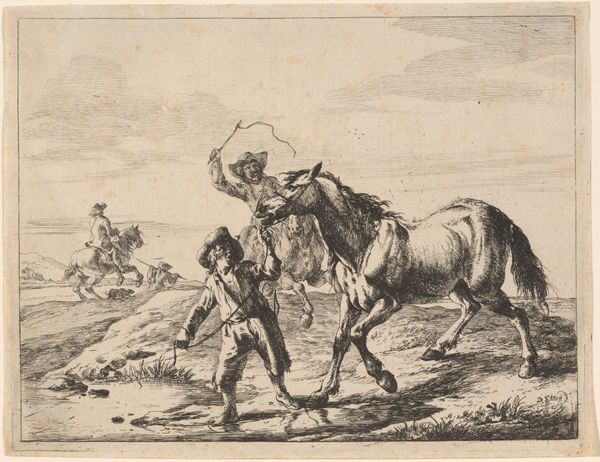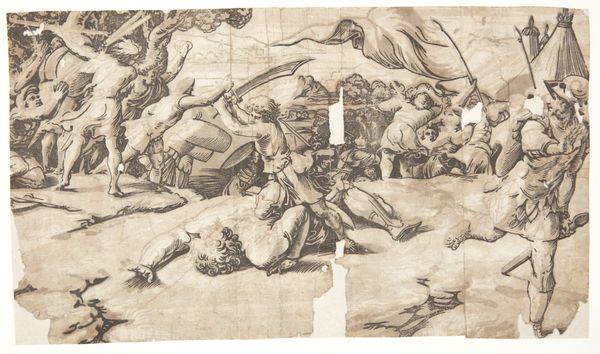
drawing, print, woodcut
#
drawing
#
ink drawing
#
narrative-art
# print
#
figuration
#
11_renaissance
#
woodcut
#
italian-renaissance
Dimensions: 228 mm (height) x 337 mm (width) (bladmaal)
Curator: Let’s take a look at this interesting print, "Peters fiskedræt," or "Peter's Fishing," created between 1510 and 1530. It’s attributed to Ugo da Carpi and rendered in woodcut. Editor: Immediately, I’m struck by the intense activity depicted. It's very dynamic. The texture feels coarse and handmade—you can really see the marks of the tool on the block. Curator: Indeed, and the subject matter connects to broader themes of labour and faith prevalent during the Renaissance. The print illustrates a biblical scene; specifically, Christ directing the apostles to fish after a fruitless night. It echoes themes of divine intervention in everyday life. Editor: I see that clearly now. And the starkness of the woodcut—it directs focus on the act of physical labour itself. Look at how bodies strain. It makes me wonder, were these prints common? How did the process influence their affordability and circulation among various social classes? Curator: The printmaking medium was key, yes. These were produced and disseminated widely in their time. Religious imagery played a key role in civic and personal devotion, so making these stories accessible was paramount. The very act of carving the block implies manual labour, something many would relate to. Editor: It is true. By today's standards, though, the work seems both skillfully rendered, yet rudimentary in process when contrasted with modern digital technologies. Each mark reminds you of the physical effort to create images and spread visual ideas in Renaissance society. What institutions were involved at the time, who were the patrons, what impact did it have on the local culture? Curator: Excellent questions. Certainly, religious institutions fostered such art production, while patrons sought ways to bolster their own religious credentials by commissioning art. These prints could reinforce doctrinal beliefs, even propaganda... and naturally promoted cultural conformity at different levels of society. Editor: Seeing the intersection between material means and belief gives it a kind of weight. To carve this out physically, for consumption, and devotional practice… It changes how I see the narrative itself. I’d say this simple looking artwork shows the story as more than a symbolic message; but as active physical labour toward shaping faith and social order. Curator: A very pertinent point! It shows the convergence of the spiritual and the material. Editor: Right! That lens clarifies a whole new depth to Ugo da Carpi's composition. Thanks for sharing your thoughts on it! Curator: The pleasure was all mine. I can say with certainty, I too saw something new!
Comments
No comments
Be the first to comment and join the conversation on the ultimate creative platform.

